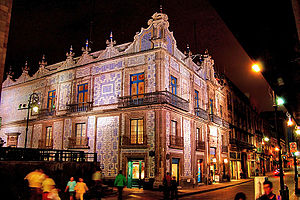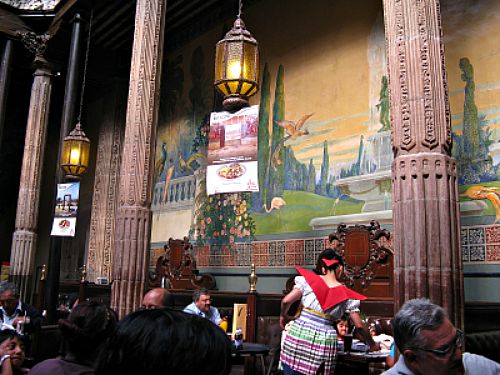 MysteryShrink Shorts: 400 Naked Men, Now That’s a Campaign!
MysteryShrink Shorts: 400 Naked Men, Now That’s a Campaign!
Dateline: Mexico City.
A few months ago, I took a right out onto the sidewalk of Juarez Street (heaviest traffic area) feeling kind of uninspired which is unusual after four cups of great coffee at the Casa de las Azuelas.** In fact, I was thinking nothing could pick me enough to do more than drag myself to my hotel.Maders
First I heard the kettle drums pounding frantically as if the sound would keep away the police. (It didn’t) Then whoops and chants. Two blocks later I came face-to-face, or rather face-to-the-buns of three to four hundred naked men. They stood on tiers facing the main thoroughfare wearing only page size posters for their political candidates across, well, their fronts. A convenient placing I didn’t realize until I’d crossed the street. Women of all sizes, shapes, and ages wearing only jeans clap hands in the middle of the street between cars. They carry cans for change. Also among the spectators young children and old people threaded through with cans for coins.
The banners are political complaints about the disastrous farm economy. The group represents 800 Pueblos –small towns. The decision to use this method of protest was made because, “We’re starving and we cannot get anyone to listen to us.” There was nothing obscene about the protest. Instead it gave a feeling of “people to people” asking for help. Also, you’re here. I’m here. Let’s have some fun with life, damnit!

MysteryShrink in Mexico City
**The Casa de los Azulejos or “House of Tiles” (Now a Sanborn’s Restuarant but fully authentic) is an 18th-century palace in Mexico City, built by the Count del Valle de Orizaba family.
There are two conflicting explanations of how this building got its current appearance. The more reliable version states that the fifth Countess Del Valle de Orizaba, who resided in Puebla, decided to return to the capital after her husband’s death and remodeled the house with Puebla tile in 1737, to show the family’s immense wealth.[1][4][5] The other version is more colorful and tells of a son whose lifestyle caused his father to state that if he didn’t change his ways he would “never build his house of tiles,”[3] meaning that he would never amount to anything. As an act of defiance, the young man had the tiles put on when he inherited the house.[3][4] These tiles cover the three exposed facades of the house on both levels.[3]





